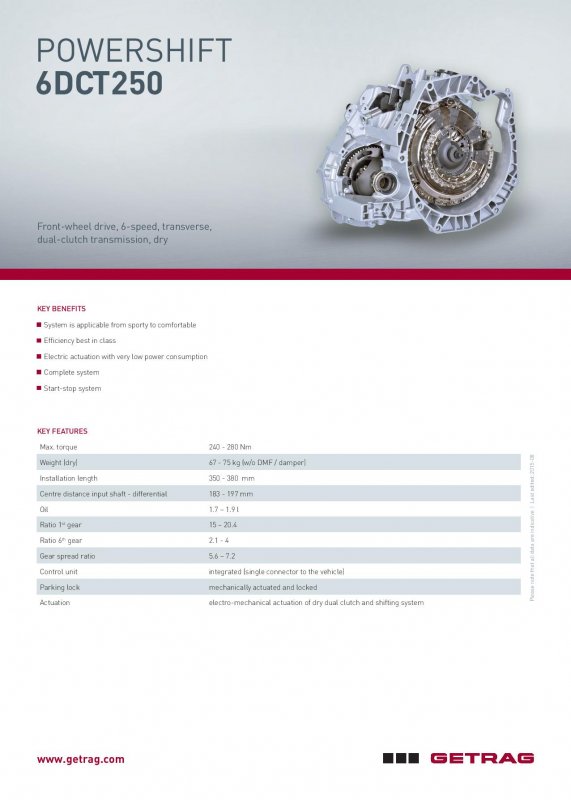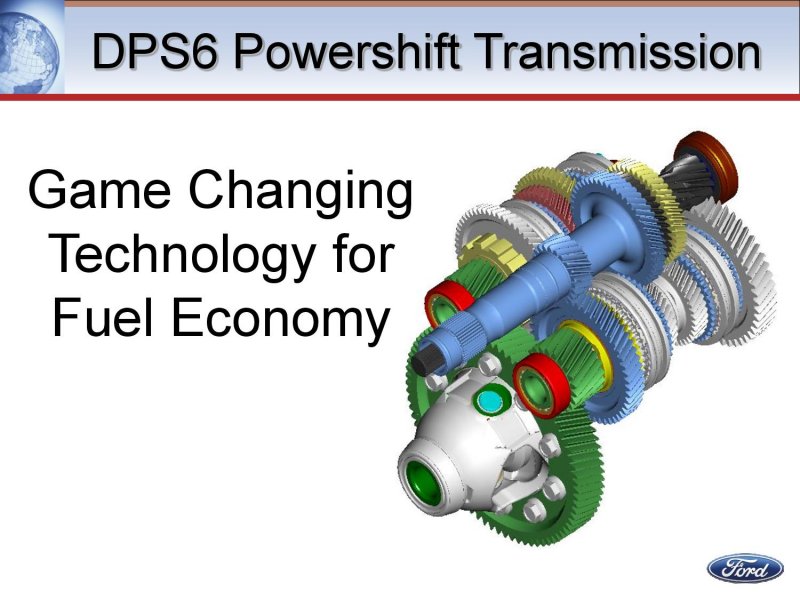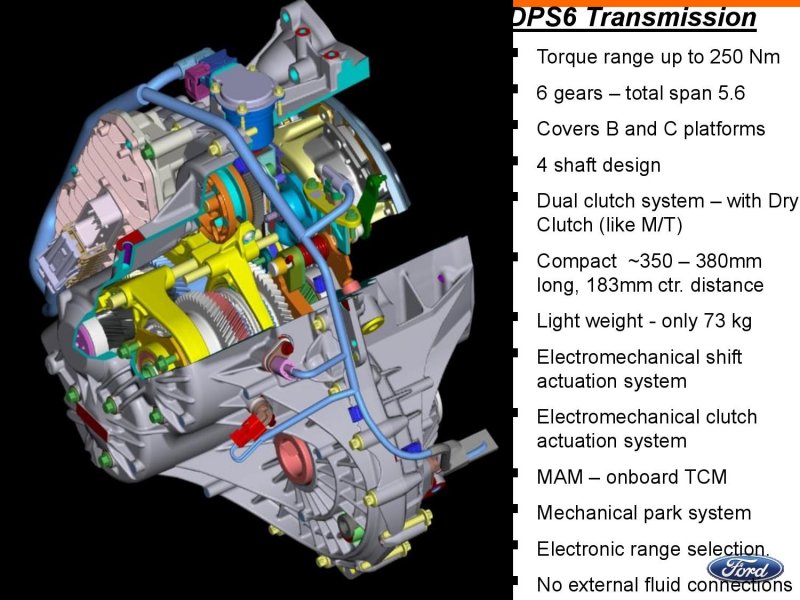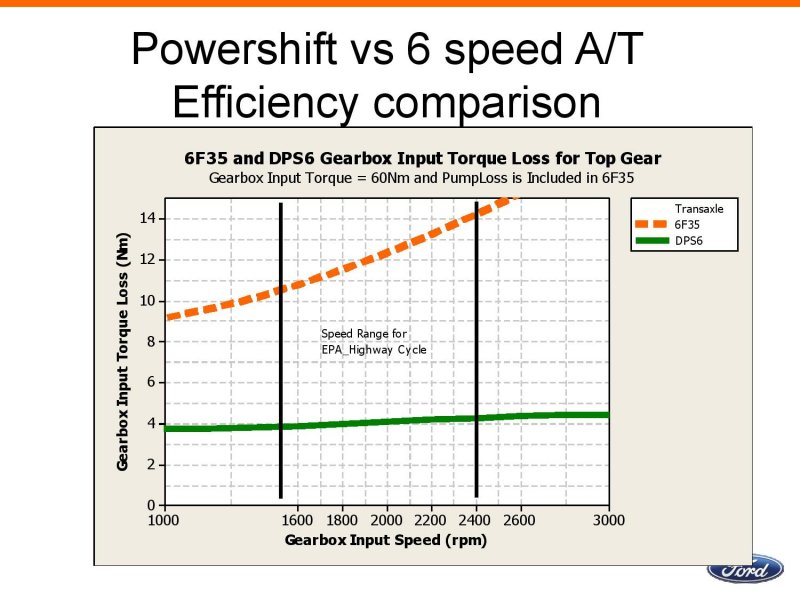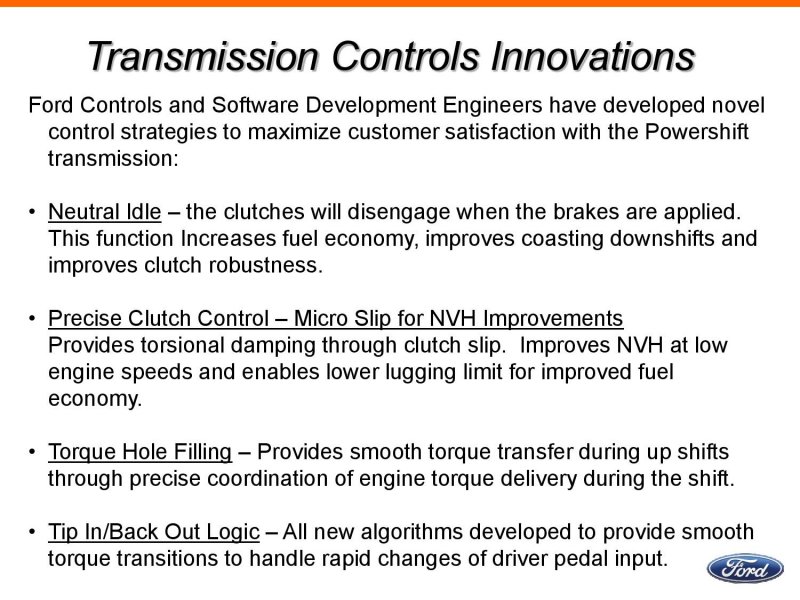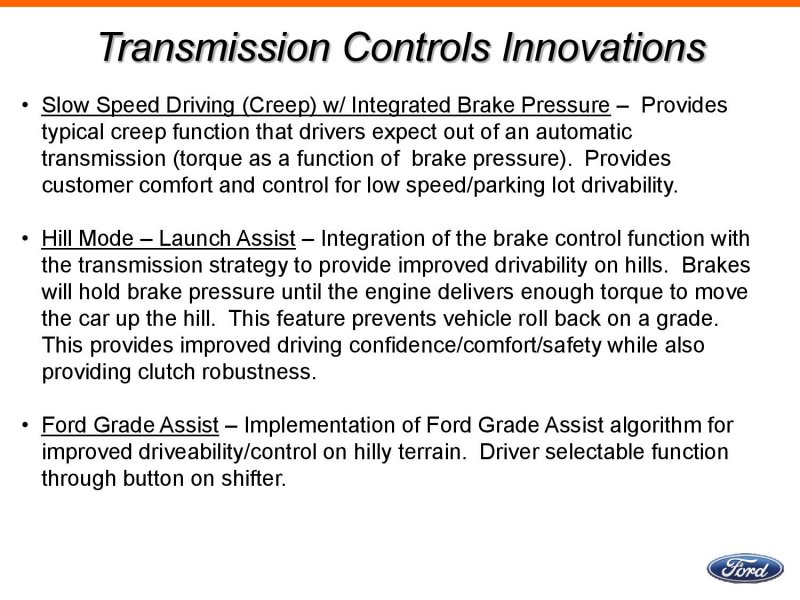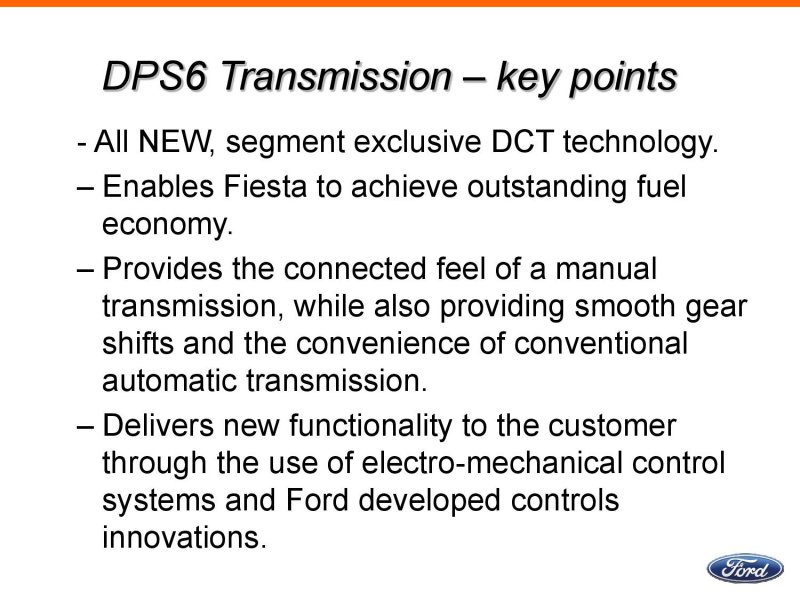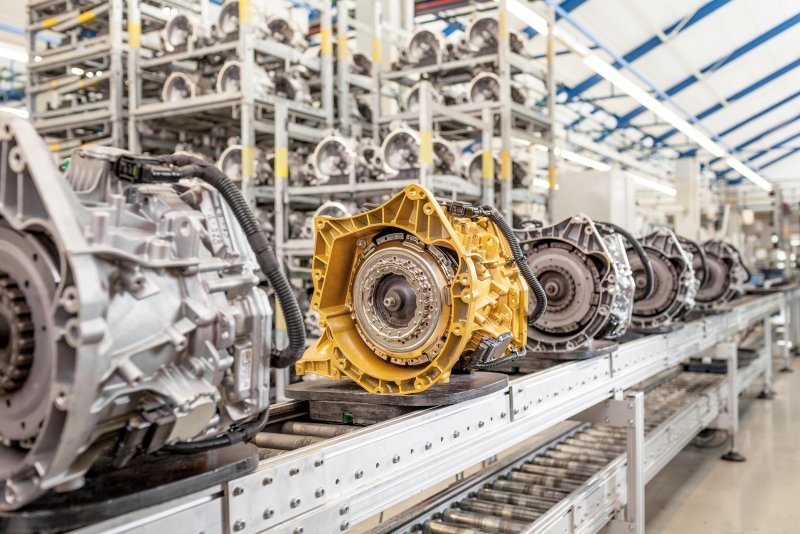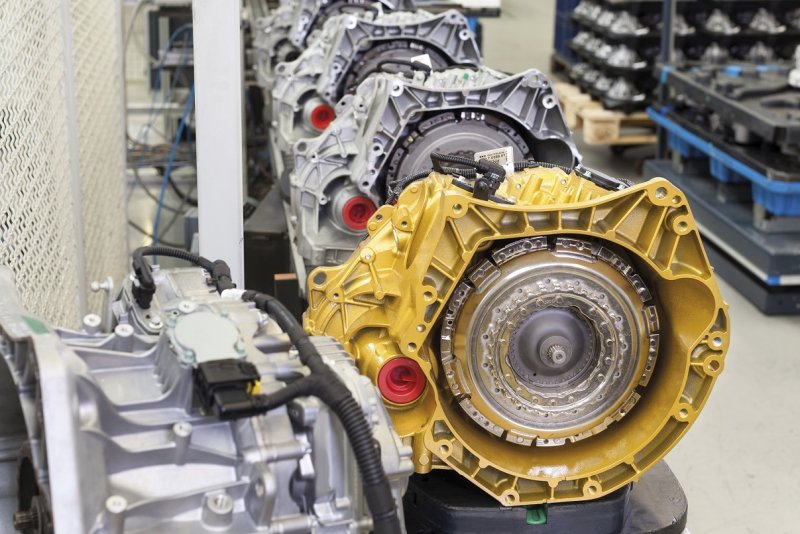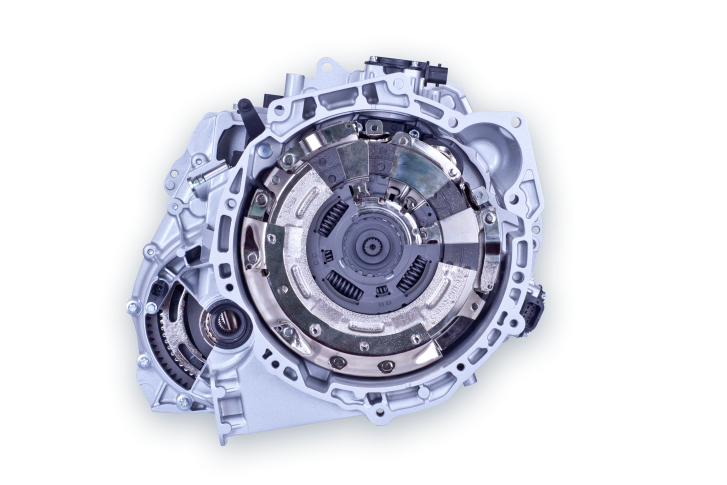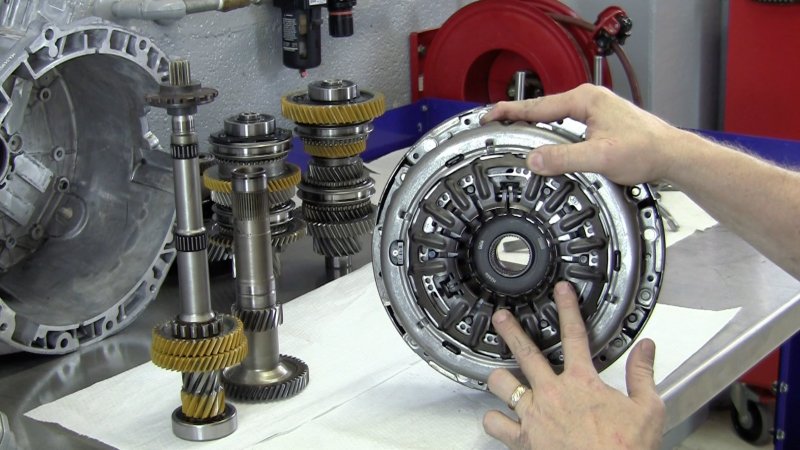Thread Starter
#1
Buddies,
While browsing You Tube, I found really informative and in-depth official videos and Precision International that explain about the Ford's DCT Mechanism which we have in the new Figo twins. For all of you who want to know what's this DCT mechanism is all about, please check out these videos.
https://www.youtube.com/watch?v=K7Q2M2K0V5k
https://www.youtube.com/watch?v=pO115VKOPnE
https://www.youtube.com/watch?v=U5fPDmQWzuM
The above 6 Speed DCT that comes in the Figo twins and EcoSport is manufactured by Getrag who refer it as the 6DCT250 model.
Regards
Akash
While browsing You Tube, I found really informative and in-depth official videos and Precision International that explain about the Ford's DCT Mechanism which we have in the new Figo twins. For all of you who want to know what's this DCT mechanism is all about, please check out these videos.
https://www.youtube.com/watch?v=K7Q2M2K0V5k
https://www.youtube.com/watch?v=pO115VKOPnE
https://www.youtube.com/watch?v=U5fPDmQWzuM
The Ford PowerShift six-speed automatic transmission will deliver the fuel efficiency of a manual gearbox with the convenience and ease of a premium automatic transmission. That’s a pretty big claim! Here’s some insider info on how the transmission does what it does.
PowerShift provides the full comfort of an automatic with a more sophisticated driving dynamic, thanks to uninterrupted torque from the dual-clutch technology, which consists essentially of two manual transmissions working in parallel, each with its own independent clutch unit. One clutch carries the uneven gears – 1, 3 and 5 – while the other the even gears – 2, 4 and 6. Subsequent gear changes are coordinated between both clutches as they engage and disengage for a seamless delivery of torque to the wheels.
A dry clutch transmits power and torque through manual transmission clutch facings, while most automatic transmissions utilize wet clutch plates submerged in oil. As a result, the dry-clutch PowerShift transmission does not require an oil pump or torque converter, providing superior mechanical efficiency.
“A dry clutch is a real sweet spot for lighter vehicle applications,” said Piero Aversa, manager, Ford Automatic Transmission Engineering. “PowerShift is more efficient, it saves weight, is more durable, more efficient and the unit is sealed for life, requiring no regular maintenance.”
PowerShift, unlike conventional automatic transmissions, does not need the heavier torque converter or planetary gears. In addition, the dry-clutch derivative eliminates the need for the weighty pumps, hydraulic fluids, cooling lines and external coolers that wet clutch transmissions require. As a result, the dry-clutch PowerShift transmission can weigh nearly 30 pounds less than, for example, the four-speed automatic transmission featured on today’s Ford Focus.
Compared to traditional automatic four-speed transmissions, PowerShift can help reduce fuel consumption by up to 9 percent, depending on the application.
Part of this Ford transmission technology has been waiting nearly 25 years for computing power to catch up to make it a reality. Specifically, the Ford PowerShift dry-clutch six-speed automatic transmission is one of the first transmissions to benefit from Torque Hole Filling (THF), a Ford-developed and patented concept and methodology conceived a quarter century ago. THF uses a combination of mathematical algorithms, computer-aided engineering (CAE) tools and transmission control technologies to fill what is commonly known as the torque hole – the slight hesitation drivers may feel during an upshift when there is a momentary drop in transmission torque output followed by a rise in torque.
To address this challenge, Dr. Davor Hrovat, a Ford Technical Fellow in Controls Research, authored an invention disclosure in the mid-1980s on how to coordinate engine and transmission controls to help eliminate the torque hole. Further analytical work and simulation revealed this pioneering concept was promising, but the technology needed to implement it wasn’t fully mature yet.
“Although the team has known what was needed to create smoother shifts, the actual implementation had to wait for drive-by-wire technologies, electronic throttle control and processing power to catch up to transform this inventive idea into a reality,” said Chris Teslak, Ford Research technical expert. He credits THF project technical leaders Yuji Fujii and Eric Tseng, along with other core technical experts/engineers Jahan Asgari, Tom Brown, Chad Griffin, Don Levens and Brad Riedle for helping to bring THF to fruition under Hrovat’s guidance.
Enabling technologies such as electronic throttle control and improved actuators and sensors, coupled with the THF methodology, gave the team of Ford engineers the tools needed to precisely sync transmission and engine to transfer and smooth out the torque during a portion of an upshift lasting a fraction of a second. Adding that little extra torque during the shift helps fill the hole, creating a smoother drive experience for the customer.
In internal engineering evaluations using a PowerShift prototype, THF improved shift quality ratings by up to 2 points on a scale of 1 to 10 in comparison to baseline shifts with conventional controls.
To pre-stage this fraction-of-a-second “conversation” between engine and transmission, a certain degree of finesse, coordination and upfront knowledge of what customers perceive as a quality shift was needed. The technology also required the Ford engineering teams from several disciplines to throw away preconceived notions about conventional engine and shift controls.
In total, the team logged approximately three years or 6,000 man-hours of computer-aided mathematical modeling, simulation and analysis of engine speeds, torque and clutch capacity in only 24 months real time to prove the THF concept was production-ready.
Ford has two U.S. patents covering broad THF applications and several other related patents are pending. Further research on how to most effectively incorporate THF into more conventional planetary gear-based transmissions is ongoing.
PowerShift provides the full comfort of an automatic with a more sophisticated driving dynamic, thanks to uninterrupted torque from the dual-clutch technology, which consists essentially of two manual transmissions working in parallel, each with its own independent clutch unit. One clutch carries the uneven gears – 1, 3 and 5 – while the other the even gears – 2, 4 and 6. Subsequent gear changes are coordinated between both clutches as they engage and disengage for a seamless delivery of torque to the wheels.
A dry clutch transmits power and torque through manual transmission clutch facings, while most automatic transmissions utilize wet clutch plates submerged in oil. As a result, the dry-clutch PowerShift transmission does not require an oil pump or torque converter, providing superior mechanical efficiency.
“A dry clutch is a real sweet spot for lighter vehicle applications,” said Piero Aversa, manager, Ford Automatic Transmission Engineering. “PowerShift is more efficient, it saves weight, is more durable, more efficient and the unit is sealed for life, requiring no regular maintenance.”
PowerShift, unlike conventional automatic transmissions, does not need the heavier torque converter or planetary gears. In addition, the dry-clutch derivative eliminates the need for the weighty pumps, hydraulic fluids, cooling lines and external coolers that wet clutch transmissions require. As a result, the dry-clutch PowerShift transmission can weigh nearly 30 pounds less than, for example, the four-speed automatic transmission featured on today’s Ford Focus.
Compared to traditional automatic four-speed transmissions, PowerShift can help reduce fuel consumption by up to 9 percent, depending on the application.
Part of this Ford transmission technology has been waiting nearly 25 years for computing power to catch up to make it a reality. Specifically, the Ford PowerShift dry-clutch six-speed automatic transmission is one of the first transmissions to benefit from Torque Hole Filling (THF), a Ford-developed and patented concept and methodology conceived a quarter century ago. THF uses a combination of mathematical algorithms, computer-aided engineering (CAE) tools and transmission control technologies to fill what is commonly known as the torque hole – the slight hesitation drivers may feel during an upshift when there is a momentary drop in transmission torque output followed by a rise in torque.
To address this challenge, Dr. Davor Hrovat, a Ford Technical Fellow in Controls Research, authored an invention disclosure in the mid-1980s on how to coordinate engine and transmission controls to help eliminate the torque hole. Further analytical work and simulation revealed this pioneering concept was promising, but the technology needed to implement it wasn’t fully mature yet.
“Although the team has known what was needed to create smoother shifts, the actual implementation had to wait for drive-by-wire technologies, electronic throttle control and processing power to catch up to transform this inventive idea into a reality,” said Chris Teslak, Ford Research technical expert. He credits THF project technical leaders Yuji Fujii and Eric Tseng, along with other core technical experts/engineers Jahan Asgari, Tom Brown, Chad Griffin, Don Levens and Brad Riedle for helping to bring THF to fruition under Hrovat’s guidance.
Enabling technologies such as electronic throttle control and improved actuators and sensors, coupled with the THF methodology, gave the team of Ford engineers the tools needed to precisely sync transmission and engine to transfer and smooth out the torque during a portion of an upshift lasting a fraction of a second. Adding that little extra torque during the shift helps fill the hole, creating a smoother drive experience for the customer.
In internal engineering evaluations using a PowerShift prototype, THF improved shift quality ratings by up to 2 points on a scale of 1 to 10 in comparison to baseline shifts with conventional controls.
To pre-stage this fraction-of-a-second “conversation” between engine and transmission, a certain degree of finesse, coordination and upfront knowledge of what customers perceive as a quality shift was needed. The technology also required the Ford engineering teams from several disciplines to throw away preconceived notions about conventional engine and shift controls.
In total, the team logged approximately three years or 6,000 man-hours of computer-aided mathematical modeling, simulation and analysis of engine speeds, torque and clutch capacity in only 24 months real time to prove the THF concept was production-ready.
Ford has two U.S. patents covering broad THF applications and several other related patents are pending. Further research on how to most effectively incorporate THF into more conventional planetary gear-based transmissions is ongoing.
Regards
Akash




